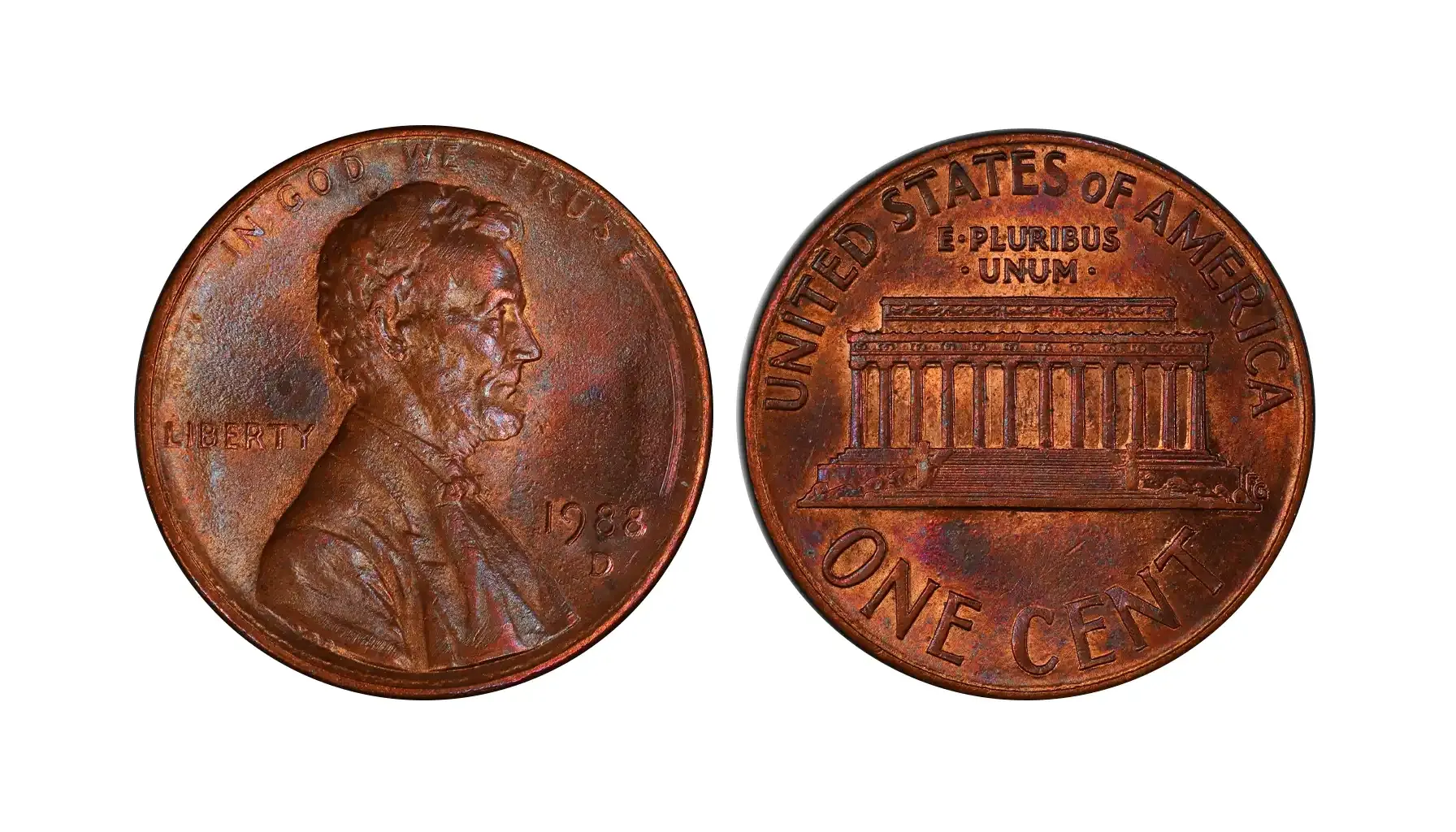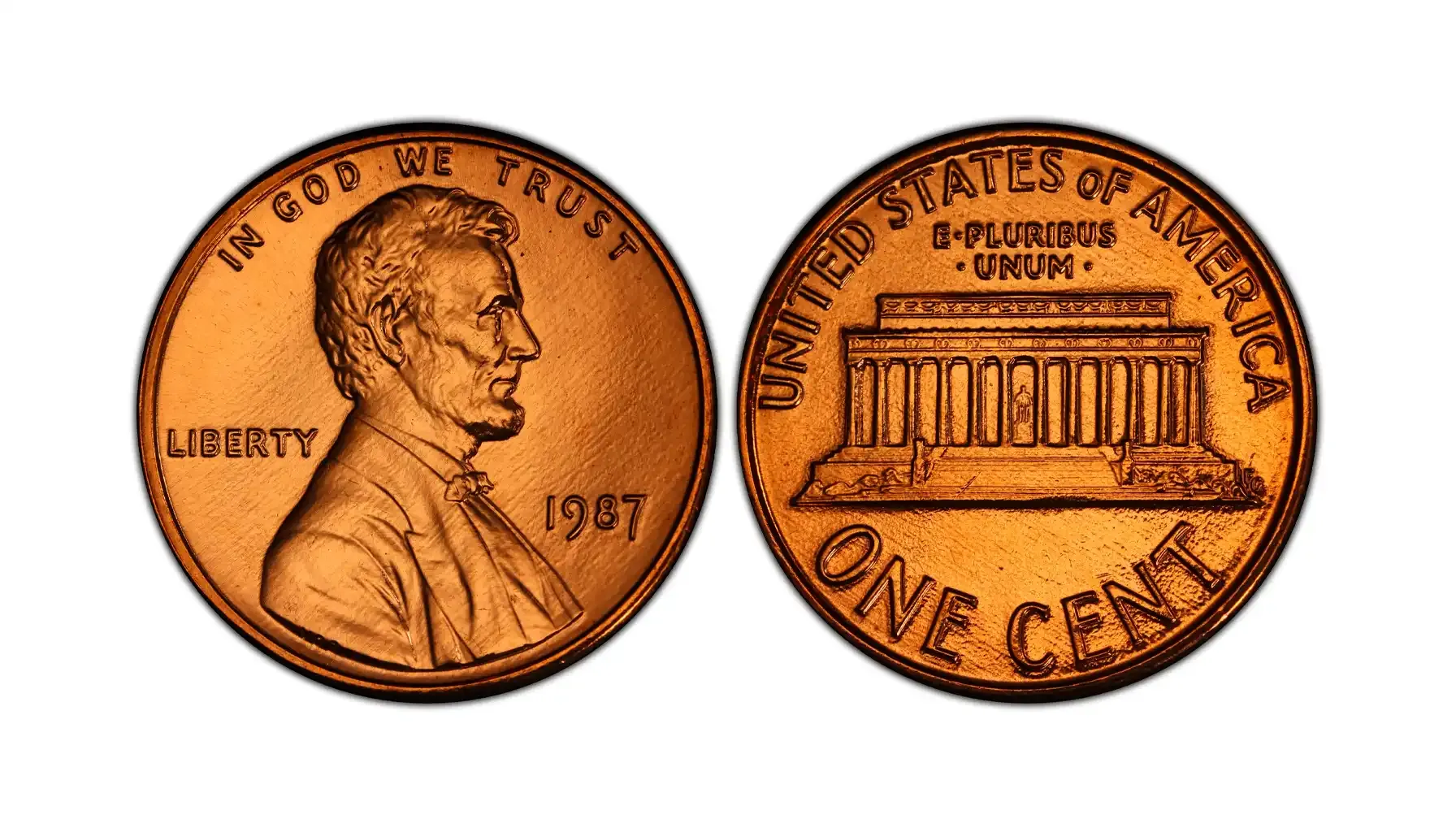Contents:
- Is There a $1000 Dollar Note?
- Who Is on the $1000 Dollar Bill?
- How Much Is a $1000 Dollar Bill Worth Today?
- Rare and Error Varieties in $1000 Bills
- 1928 vs. 1934: Comparing the Two Main Types
- When Was the $1000 Bill Discontinued?
- Modern Fakes and Novelty $1000 Bills
- Can You Still Buy or Sell a $1000 Dollar Note?
- Final Thoughts on Owning a $1000 Note
The $1000 note first appeared in series 1928, featuring President Grover Cleveland on the obverse and allegorical figures on the reverse. The U.S. Treasury issued these high-denomination notes for large transactions between Federal Reserve banks.
In 1934, the design changed to honor President Woodrow Wilson, reflecting a shift in America’s political landscape. Both issues ceased public circulation in 1969 but remain prized by collectors today.
Collectors value these notes for their rarity and historical significance. Condition, series date, and subtle printing variations influence market prices. You can track auction results or consult a coin value checker to estimate current worth.
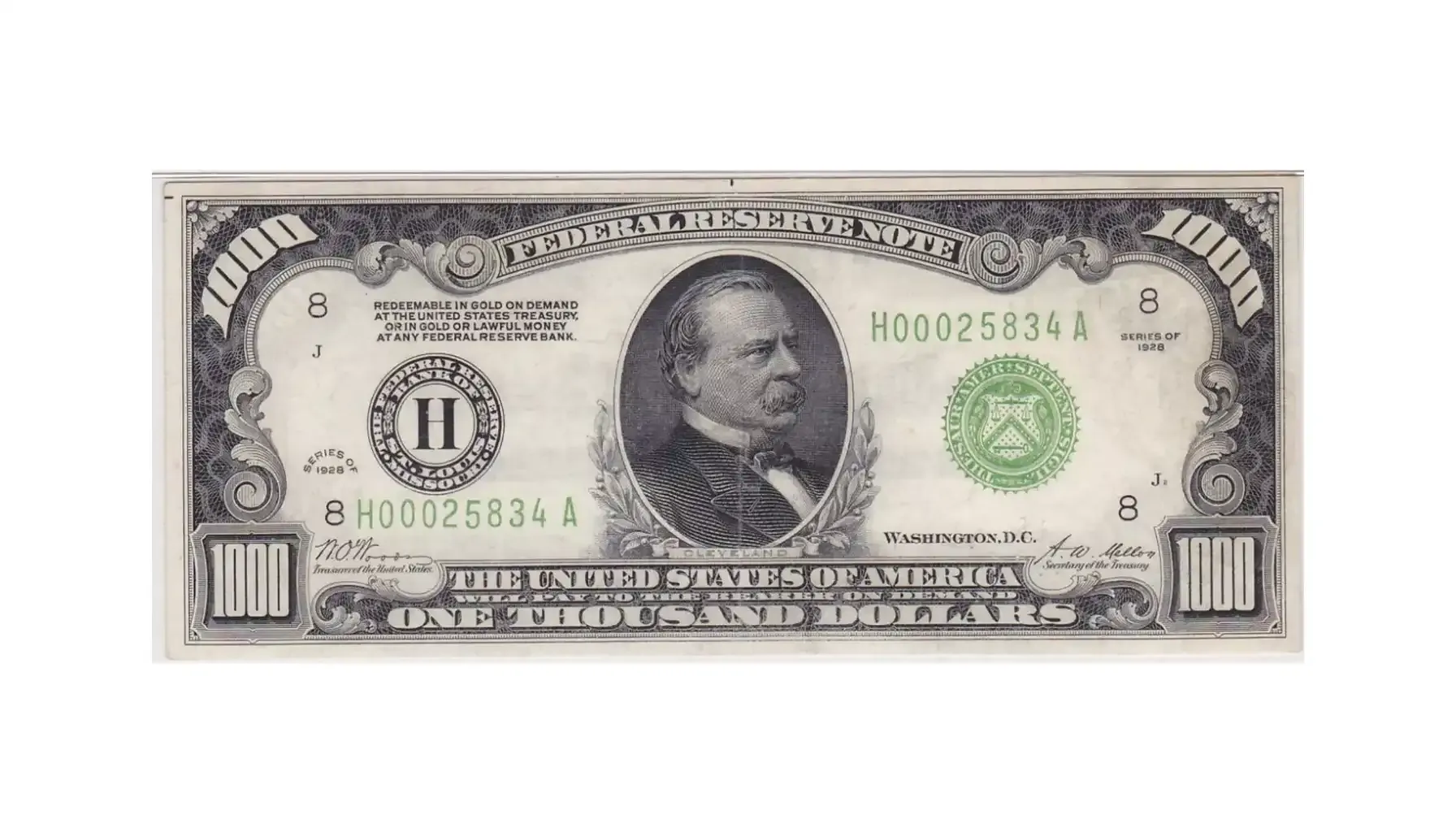
Is There a $1000 Dollar Note?
Many people wonder is there a 1000 dollar bill when they first hear the term. High-denomination notes like $500, $1000, and above once served special banking needs. These notes never appeared in everyday transactions for most Americans. When you ask is the 1000 dollar bill real, you’ll find that these notes did exist, but only for large-scale transfers between Federal Reserve banks.
Questions like does a 1000 dollar bill exist often reflect public misconceptions. Most people never handled such high-value notes because they removed them from circulation decades ago. The U.S. Treasury stopped printing notes above $100 in 1945 and officially withdrew them in 1969. If you search your pockets or wallet today, you won’t find one, even though many still wonder is there such thing as a 1000 dollar bill.
Collectors still chase these rare notes, so you may ask do they make a 1000 dollar bill in terms of modern reproductions and commemorative prints. While the Federal Reserve no longer issues them, collectors value surviving originals for their historic significance. For more on paper money rarities and how errors affect value, see Value of Paper Money Errors.
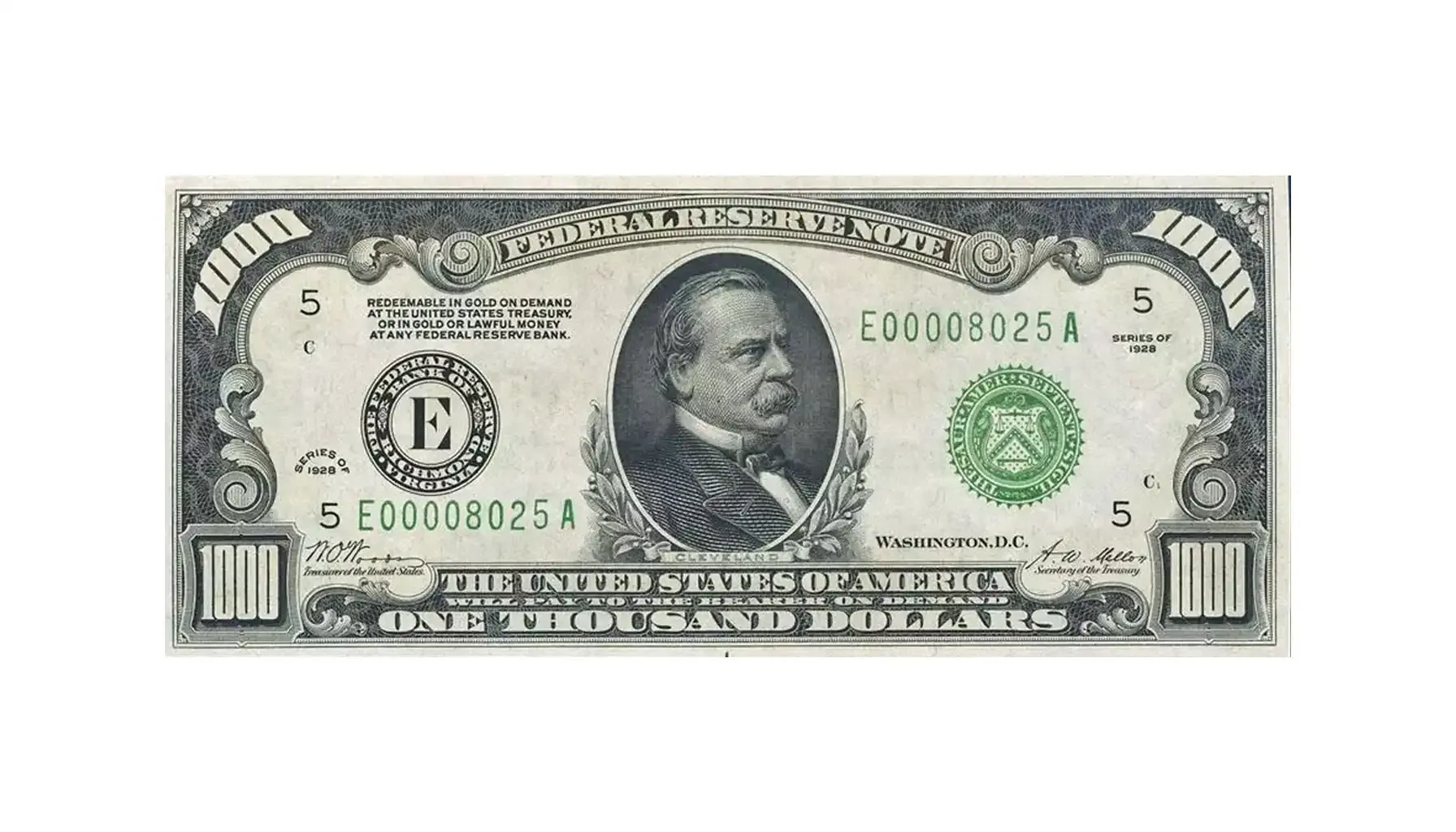
Who Is on the $1000 Dollar Bill?
Many people wonder who is on a 1000 dollar bill when they first hear about this high-denomination note. In 1928, the U.S. Treasury honored President Grover Cleveland on the face of the $1000 note. If you ask who was on the 1000 dollar bill, the answer points to Cleveland’s portrait flanked by ornate engravings. The design appeared with distinctive green and black printing, and who is on the $1000 dollar bill became common trivia among collectors.
In 1934, the series shifted to feature President Woodrow Wilson. Those curious who’s on 1000 dollar bill will find Wilson’s likeness on the obverse of the later issue. You might also ask whos on the 1000 dollar bill or whos face is on the 1000 dollar bill; both refer to Wilson in that series. Collectors often note what president is on the 1000 dollar bill to distinguish between the Cleveland and Wilson issues, as each carries its own historical context and collectible appeal.
Even though these notes ceased public circulation decades ago, collectors still seek them for their rarity and historical appeal.
1928: Grover Cleveland
1934: Woodrow Wilson (used in Federal Reserve notes)
Differences in usage (Cleveland notes served through 1934; Wilson notes from 1934 onward, used primarily by banks)
For more on paper money collecting and rare notes, see Rare 10 Dollar Bills.
How Much Is a $1000 Dollar Bill Worth Today?
Collectors often ask how much is a 1000 dollar bill worth when they find one in an old collection. In average circulated condition, a 1928 Grover Cleveland note can trade near $1,200–$1,500. Uncirculated examples graded Gem (PMG 65 EPQ or higher) can command $3,000–$5,000 or more. Star notes and exceptionally crisp plates push the worth 1000 dollar bill value even higher at auction.
When you ask how much is a 1934 a $1000 dollar bill worth, you’ll find that Woodrow Wilson issues in worn grades start around $1,100–$1,300. Uncirculated 1934 notes often range from $2,500 to $4,000 in mid-level grades. Top-end examples, especially those with rare serial numbers or star designations, can reach $10,000 or beyond. Tracking recent auction results helps you gauge accurate $1000 dollar bill value for each series.
Year | Condition | Approx. Value |
1928 | Fine | $2,500–$4,000 |
1934 | Unc. | $5,000–$12,000 |
Rare and Error Varieties in $1000 Bills
Mismatched Serials

A rare $1000 dollar bill often shows matching serial prefixes and suffixes on both sides. A mismatched serial stands out because the left prefix does not match the right prefix. Collectors ask what makes a 1000 dollar bill rare when they find this error. Even a rare 1934 $1000 dollar bill can gain value if its serials differ.
Compare the prefix letters on the left and right sides of the note.
Hold to light to check for consistent ink density on both serial lines.
Use a magnifier to spot slight alignment shifts between serial numbers.
Verify that plate position codes match when applicable.
Check auction records to see premiums paid for mismatched serial examples.
Misprints or Ink Smudges
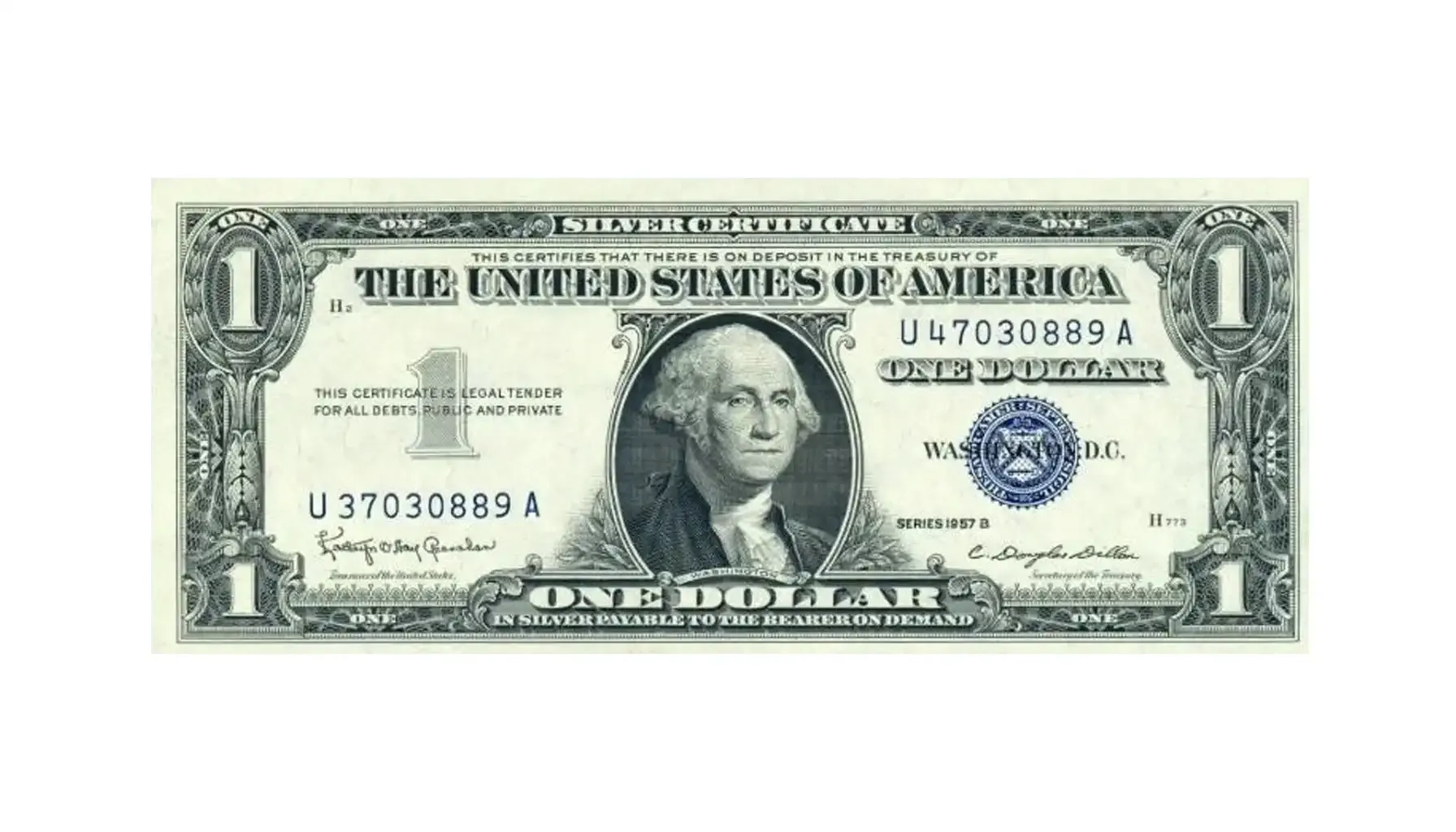
A rare $1000 dollar bill with misprints often has uneven ink distribution on portraits or seals. This flaw can obscure key features on the note. Collectors ask what makes a 1000 dollar bill rare when ink smudges disrupt the design. Even a rare 1934 $1000 dollar bill with smudged serials can demand higher bids.
Inspect the portrait area for blotchy or blurred lines around the face.
Check seals and serial numbers for uneven ink thickness or bleeding.
Look for areas where ink failed to print, creating white gaps in the design.
Use angled light to reveal gloss variations where ink has pooled or smeared.
Compare with a properly struck note to pinpoint misalignment or smearing patterns.
Low or Fancy Serial Numbers
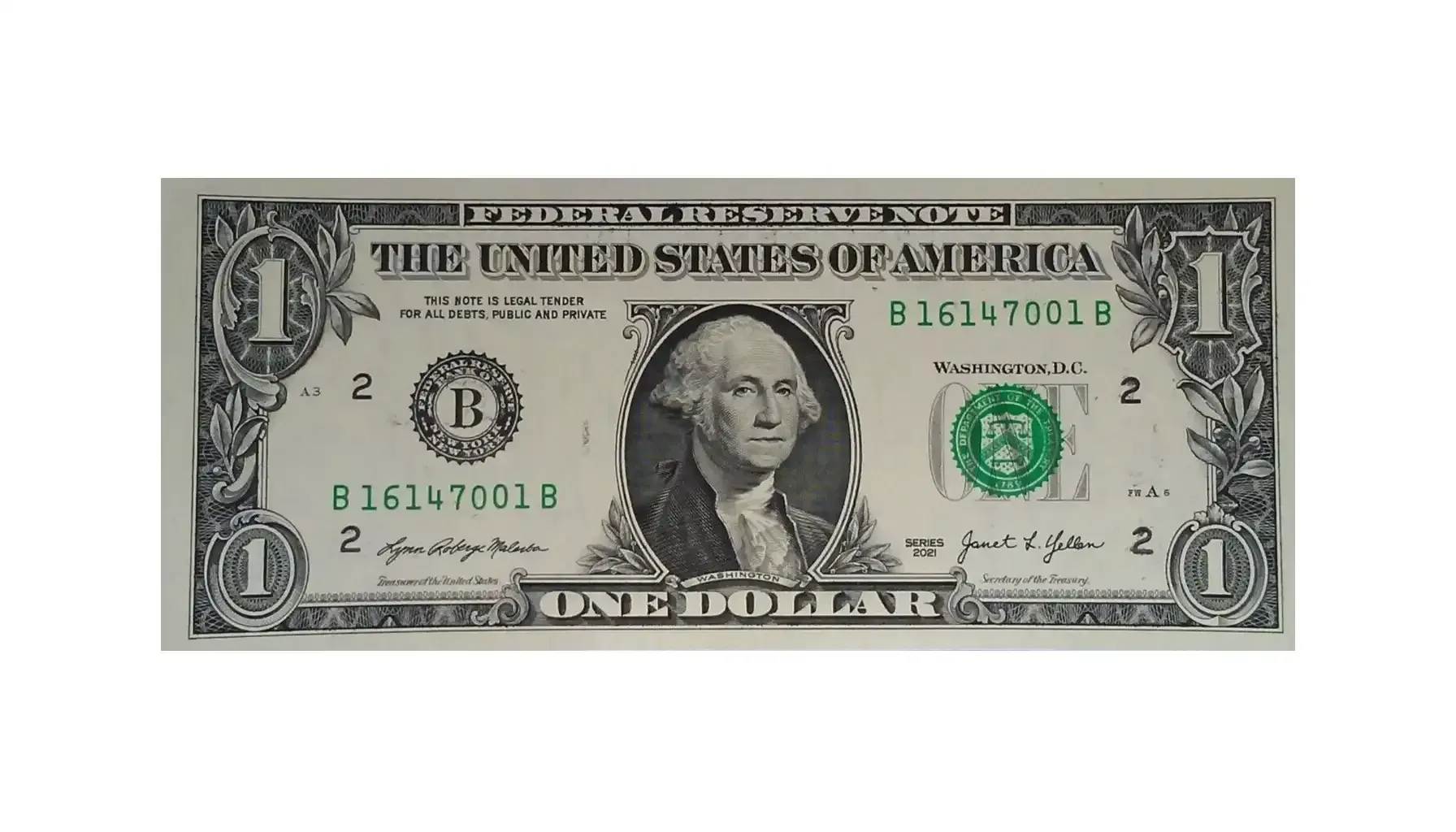
A rare $1000 dollar bill can feature low serials like “00000001” or a repeating pattern. Collectors wonder what makes a 1000 dollar bill rare when they spot “10001000” or “12341234.” Even a rare 1934 $1000 dollar bill with a fancy serial often tops value charts at auctions.
Scan for serials starting with multiple zeros, which indicate low production sequence.
Identify repeating or sequential numbers like “11111111” or “12345678.”
Note unique patterns such as palindromes (e.g., “12211221”) or ladders (e.g., “23456789”).
Consult price guides to see premiums for specific fancy serial categories.
Verify authenticity with watermark and security thread checks before valuing the serial.
1928 vs. 1934: Comparing the Two Main Types
The 1928 and 1934 issues of the 1000 us dollar bill differ notably in design and issuing authority. The 1928 note features Grover Cleveland and bears “Series 1928” across the face. In contrast, the 1934 edition depicts Woodrow Wilson and labels itself with “Series 1934.” Each 1000 dollar bill us type displays distinct treasury seals and signatures aligned with its respective era.
Collectors also compare market values between these two types. The 1000 dollar us bill from 1928 often trades higher in older grading guides due to its smaller surviving population. When evaluating a 1928 $1000 bill vs 1934, many find that the 1934 series appears more frequently but still holds strong premiums in uncirculated grades.

Feature | 1928 Series | 1934 Series |
Portrait | Grover Cleveland | Woodrow Wilson |
Seal Type | Gold | Green |
Circulation | Lower | Wider use in banks |
When Was the $1000 Bill Discontinued?
The U.S. Treasury officially withdrew high-denomination notes, including the 1000 dollar bill, from circulation in 1969. Many ask when was the 1000 dollar bill discontinued, noting that these notes hadn’t circulated among the general public for years before the withdrawal. Even after discontinuation, they remained legal tender and could technically be spent at face value, though most entered collector hands instead.
Long before their phase-out, people wondered was there ever a 1000 dollar bill, since common currency seldom exceeded $100 in daily use. The first issue in 1928 featured Grover Cleveland, and collectors often ask who is on the 1000 dollar bill to distinguish between Series 1928 and 1934 notes. These high-value served primarily for large interbank transfers rather than everyday transactions.
Production of these large‐value currency pieces stopped once electronic payment systems became widespread. These high‐denomination instruments remained legal tender until the Treasury withdrew them in 1969.
Today, collectors prize well‐preserved specimens, often paying sums far above the printed face amount. Because of their scarcity and historical importance, some examples have fetched thousands at auction.
Modern Fakes and Novelty $1000 Bills
Collectors sometimes encounter novelty notes like the trump 1000 dollar bill, which often carry decorative images of political figures. These items have no monetary legitimacy. Manufacturers also sell “gold-plated” replicas. You may see listings for 24k gold 1000 dollar bill value, but these notes contain no real gold and trade only as collectibles.
Other counterfeits push the absurd, such as toys styled as a 100000000000000000000 dollar 1000 dollar bill or generic american 1000 dollar bill imitations. These pieces never circulated and hold no legal status. They exist solely to attract attention or advertise novelty value.
Stay vigilant when sorting notes. Genuine notes show precise printing, consistent paper texture, and official watermarks. For more on spotting counterfeits and understanding genuine coin and note value, see 20 Most Valuable One Dollar Coins.
Common fake examples: Notes featuring non-historical faces like celebrities. These replicas often lack security features and show blurred details.
Legal tender vs. novelty print: Legitimate $1000 notes include fine-line engraving and Federal Reserve seals. Novelties use shiny inks and fantasy designs.
Warning signs of replicas: Check for missing watermarks, off-register printing, and flimsy paper. Genuine notes feel crisp with raised ink on portraits.
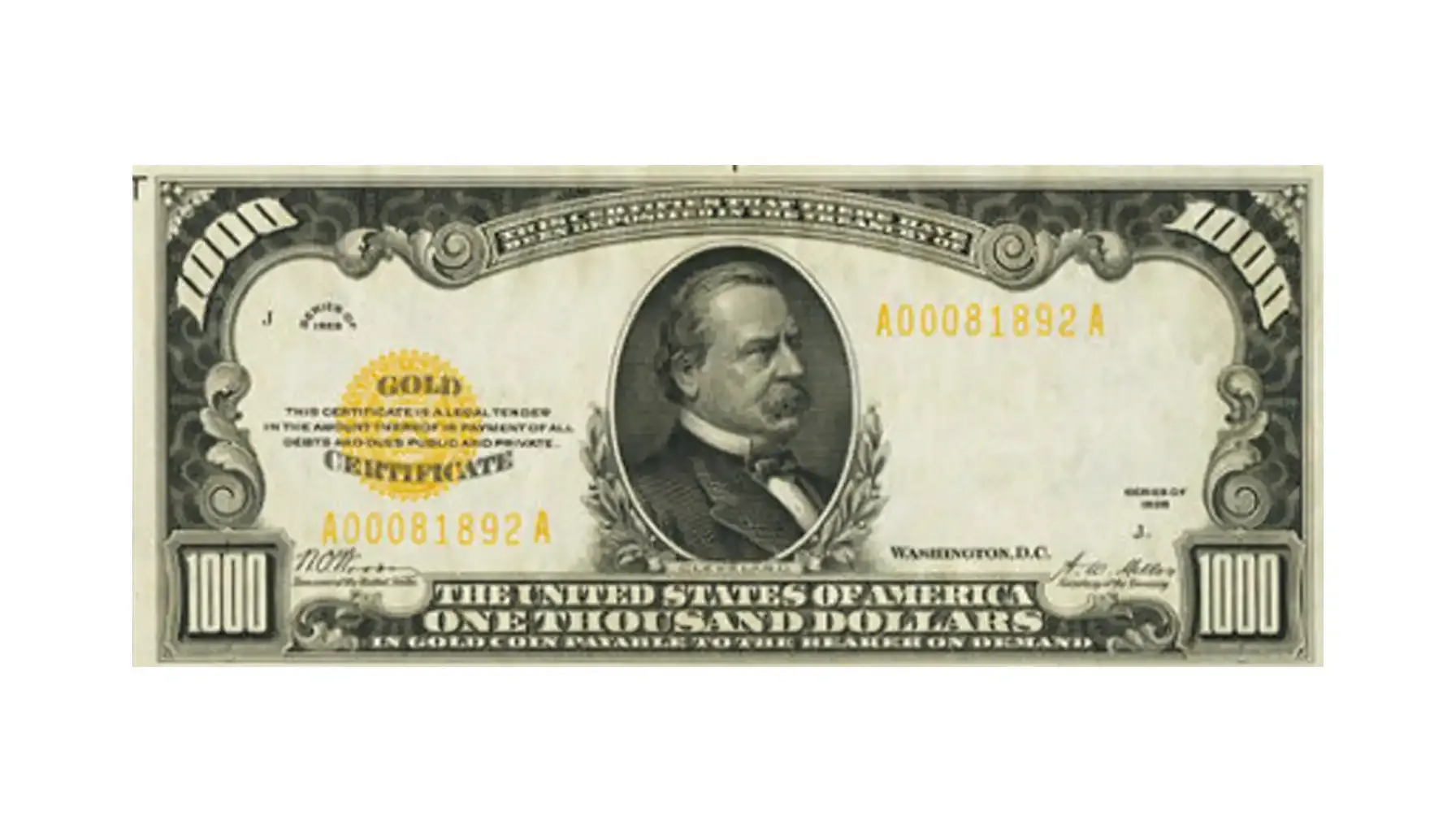
Can You Still Buy or Sell a $1000 Dollar Note?
You can find a $1000 dollar bill for sale through reputable auction houses and specialized currency dealers. Many sellers list authentic notes online, with prices varying by condition and series. Always verify seller credentials before committing.
When searching, look for listings titled 1000 dollar bill for sale that include detailed photos and grading information. Dealers often specify whether the note is a Series 1928 Grover Cleveland or a Series 1934 Woodrow Wilson. That clarity helps you confirm you’re buying a genuine us 1000 dollar bill.
Collectors admire these notes partly because of the featured 1000 dollar bill president on each issue. Whether you want Cleveland’s portrait or Wilson’s face, be prepared to pay premiums for high-grade, well-preserved examples.
Enthusiasts often scrutinize series numbers, printing variations, and signature combinations to confirm authenticity and grade. Secure storage and professional grading services help maintain these rare collectible currency pieces in pristine condition.
Auction results demonstrate that demand for top-quality examples remains high, attracting both seasoned investors and amateur collectors.
Final Thoughts on Owning a $1000 Note
Collectors often wonder is a 1000 dollar bill worth anything when they uncover one in an old collection. First, verify authenticity by checking paper quality, watermark presence, and serial number consistency. Once confirmed, grade the note’s condition. Crisp, uncirculated notes drive the value of 1000 dollar bill far above face, while worn examples still attract collector interest due to scarcity.
Some people ask do they make a 1000 dollar bill today, but the Federal Reserve discontinued production decades ago. As a result, existing notes only gain value through rarity and historical appeal. To explore broader collecting strategies and authentication advice for paper and coin rarities, see What Is My Penny Worth?.


